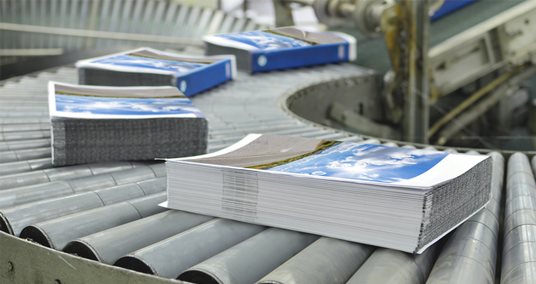
Perfect binding is popular because it’s fast, clean-looking, and cost-effective—even for short runs. As page counts and turnaround times have dropped, machines are used in new ways, which introduces a few gotchas. Here are the common issues and how to avoid them so your next job runs smoothly.
Lock these in before you start:
Stock caliper drives speed and accuracy. Thicker books require slower cycles and careful trimmer settings. Thin 2-page sheets behave differently than folded signatures and often force operators to slow the binder—introducing inconsistency. Know the exact caliper and set your milling depth, clamp pressure, and trim accordingly.
Most adhesion issues show up when non-absorbent coatings or heavy inks live in the spine and side-glue zones. When in doubt, spec PUR adhesive: it delivers the strongest hold, excellent flexibility, and superior performance on coated and digitally printed stocks compared to conventional EVA.
Modern binders offer presets, touchscreen guidance, and closed-loop controls that reduce human error and cut changeover time. Use job recipes, verify each station (milling, gluing, nipping, three-knife), and let the machine run at the speed your stock and adhesive allow—no faster.
We stock replacement parts and consumables for perfect binders—cover scoring tools, milling heads and guides, spine glue, trimmer knives, press pads, and more.
Call 1-800-229-0009 or email sales@updateltd.com for quick help and parts sourcing.